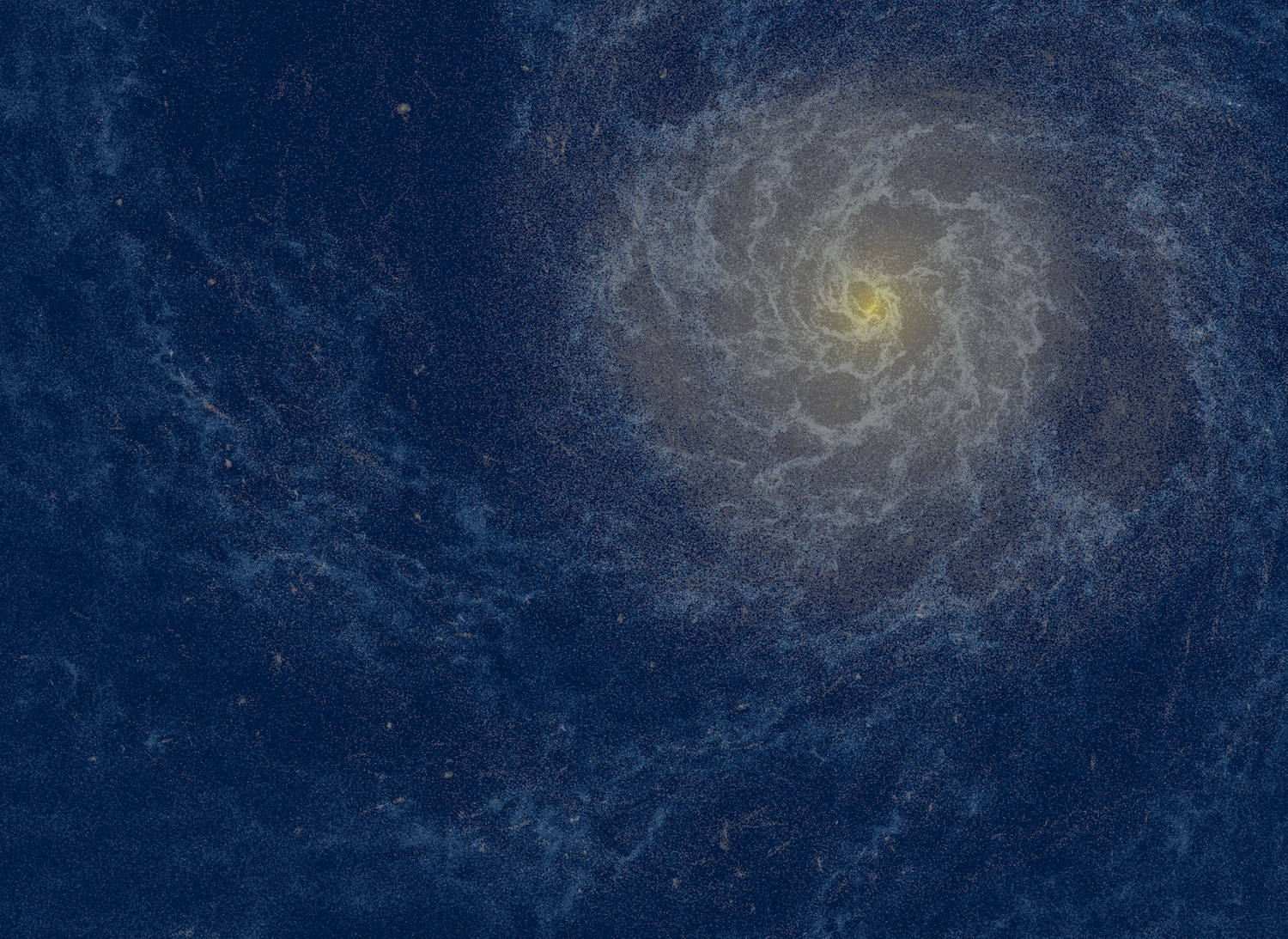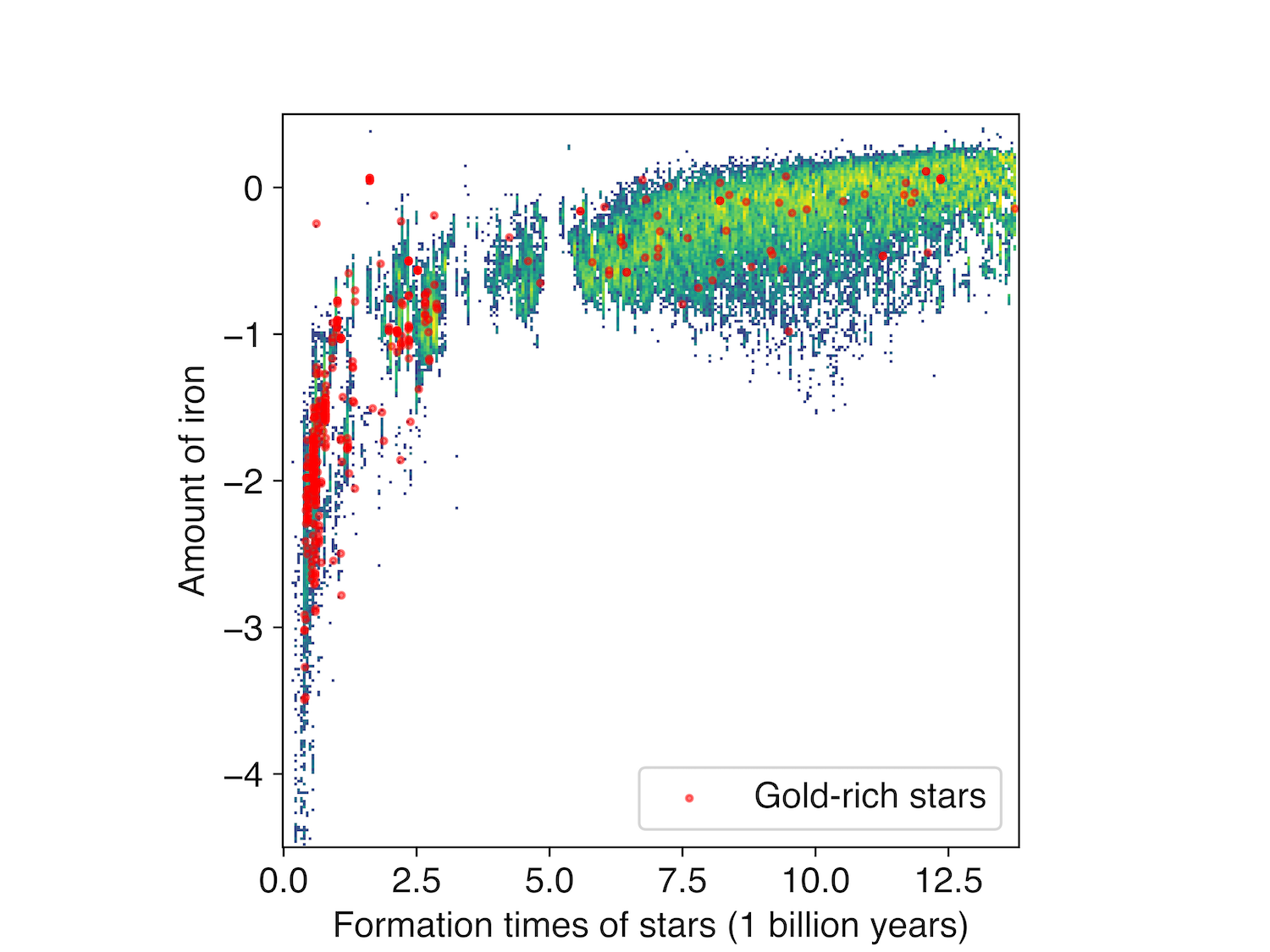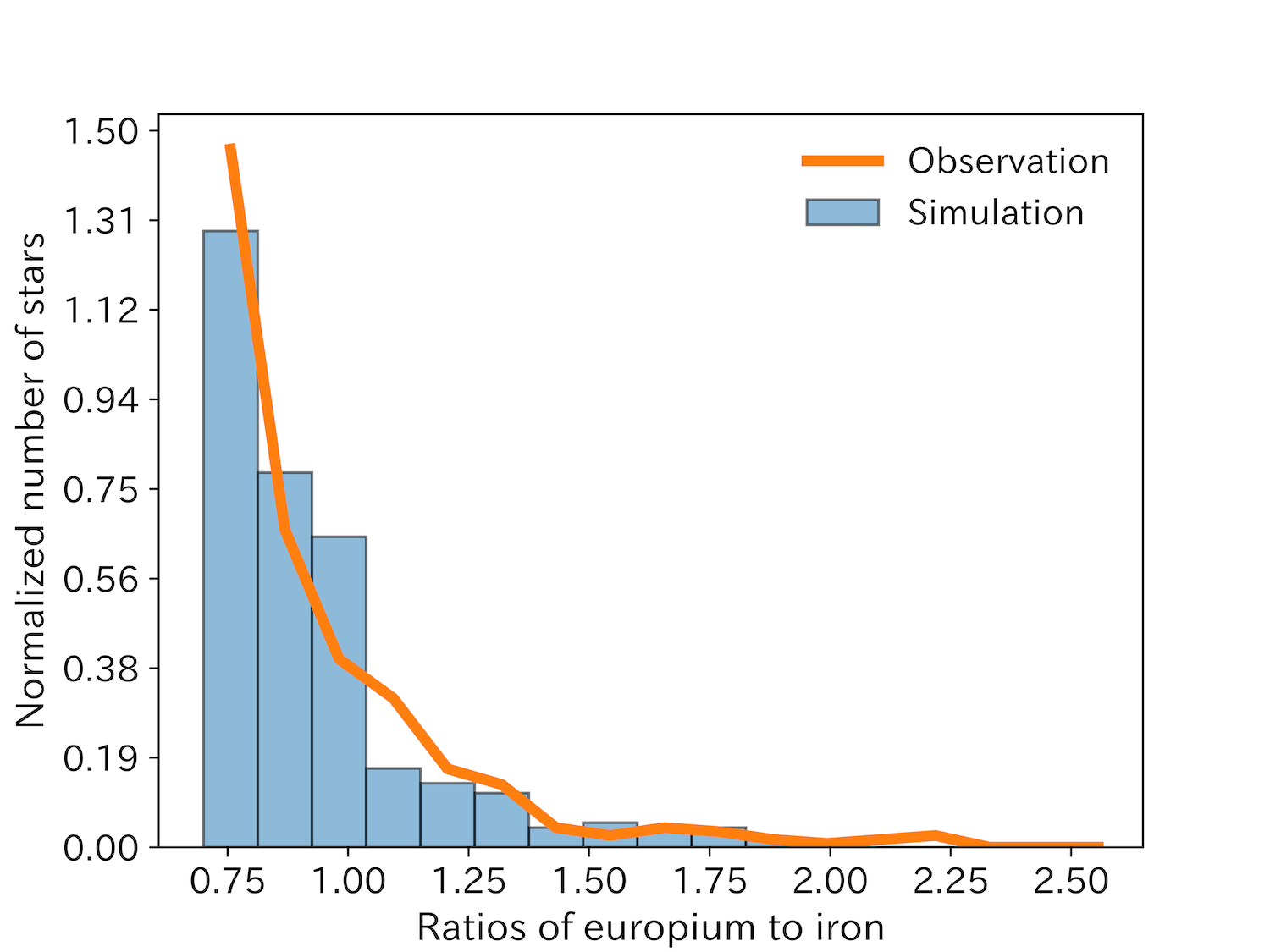Recently, hundreds of gold-rich stars have been detected by state-of-the-art telescopes worldwide. New simulations of galaxy formation, with the highest resolution in both time and mass, show that these gold-rich stars formed in progenitor galaxies, small galaxies which merged to create the Milky Way.

Download: [JPG, 1.7 MB]
Stars are thermonuclear chemical factories that produced most of the elements incorporated into planets. Most elements heavier than iron, including precious metals such as gold and platinum, came about from the rapid neutron-capture process (r-process). When they die, stars release the heavy elements they’ve created into interstellar space where the elements can be reincorporated into the next generation of objects. Like planets, new stars also incorporate the heavy elements released by previous generations. By studying the chemical composition of stars, we should be able to deduce the kind of environment where the stars formed. But so far, a theoretical framework to explain the observed chemical diversity has been missing.
Now, an international research team, led by Yutaka Hirai from Tohoku University and the University of Notre Dame, tracked the formation of a virtual Milky-Way-like galaxy from the Big Bang to the present with a numerical simulation. This simulation has the highest time and mass resolutions to date, allowing the team to investigate the cycle of new materials released by old stars and absorbed into new ones.
Using the supercomputer ATERUI II in the Center for Computational Astrophysics at the National Astronomical Observatory of Japan, the team successfully ran the simulation over the course of several months, making it possible for the first time to analyze the formation of gold-rich stars in the Milky Way.
According to the research, most gold-rich stars formed over 10 billion years ago in small, building-block galaxies—known as progenitor galaxies. Some but not all progenitor galaxies experience a neutron star merger, where large amounts of heavy r-process elements are produced and released, enriching that particular small galaxy. The predicted abundance of gold-enriched stars in the final Milky-Way-sized galaxy matches what is actually observed.

Download: [PNG, 1.7 MB]

Download: [PNG, 809 KB]
“The study’s findings open a new avenue for extracting the fossil records of stars,” says Hirai. “The gold-rich stars today tell us the history of the Milky Way.”
Looking ahead, Hirai and his team plan to simulate the Milky Way’s formation and clarify the origins of individual stars with the help of the new Fugaku supercomputer.
These findings were published as Hirai et al. “Origin of highly r-process-enhanced stars in a cosmological zoom-in simulation of a Milky Way-like galaxy” in the Monthly Notices of the Royal Astronomical Society on November 14, 2022.
(November 14, 2022 press release)
Research Paper
Title: Origin of highly r-process-enhanced stars in a cosmological zoom-in simulation of a Milky Way-like galaxy
Authors: Yutaka Hirai, Timothy C. Beers, Masashi Chiba, Wako Aoki, Derek Shank, Takayuki R. Saitoh, Takashi Okamoto, Junichiro Makino
Journal: Monthly Notices of the Royal Astronomical Society
DOI: 10.1093/mnras/stac2489
[Supercomputer used in this research]
[About this research project]
This research was supported by the Grant-in-Aid for Scientific Research from JSPS (JP21J00153, JP20K14532, JP21H04499, JP21K03614, JP22H01259, JP21H05448, JP18H05437, JP21H00055, JP21H04500, JP21K03633, JP20H05861, JP21H04496, JP19H01931, JP20H01625, JP21K11930), MEXT as “Program for Promoting Researches on the Supercomputer Fugaku” (Toward a unified view of the universe: from large scale structures to planets, Grant No. JPMXP1020200109), JICFuS, Grants PHY-1430152; Physics Frontier Center/JINA Center for the Evolution of the Elements (JINA-CEE), and OISE-1927130: The International Research Network for Nuclear Astrophysics (IReNA), awarded by the US National Science Foundation.
[For the Use of Contents in This Website]
- Contents are to be used with a clear indication of its copyright (e.g. (c) NAOJ.)
- If you would like to use the contents found in this web site, please follow Terms of Use of the Website of NAOJ.
[Related Links]
NAOJ Press Release: Gold-rich Stars Came from Ancient Galaxies

